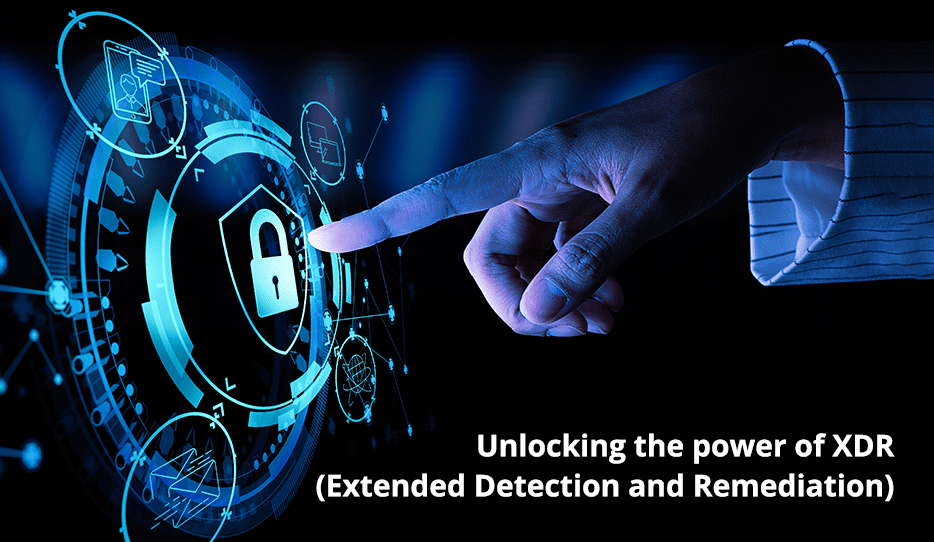
The battle between cyber defenders and attackers has reached new levels of complexity. As cyber threats become increasingly sophisticated, organizations must adapt to the changing landscape to protect their valuable digital assets. Enter XDR, or Extended Detection and Response, an evolving security category that promises to revolutionize the way we approach cybersecurity.
XDR: Unifying Threat Prevention, Detection, and Response
XDR is not just another acronym in the world of cybersecurity; it represents a paradigm shift in how we safeguard our digital ecosystems. At its core, XDR solutions consolidate the vast and disparate data generated by an organization’s security technology stack. By doing so, they empower Security Operations Center (SOC) teams with the context needed for faster, more effective threat detection, investigation, and response.
How does XDR Work?
Data Collection Across Multiple Fronts:
XDR operates as a gatekeeper, diligently collecting data from various fronts within an organization’s digital fabric:
Email: XDR monitors email communications for signs of malicious attachments, phishing attempts, and other email-borne threats.
Endpoints: Every device connected to the network is a potential entry point for cyber threats. XDR scans endpoints like desktops, laptops, and mobile devices for any signs of compromise or suspicious activity.
Servers: Critical infrastructure, including servers, is a prime target for attackers. XDR extends its watchful eye to servers, scrutinizing them for any vulnerabilities or unauthorized access.
Cloud Workloads: As organizations increasingly embrace cloud computing, XDR doesn’t leave the cloud out of the equation. It monitors cloud workloads, ensuring that security extends seamlessly into cloud environments.
Networks: The network is the lifeblood of any organization. XDR keeps tabs on network traffic, flagging any unusual patterns or potential intrusions.
Correlating Data for Comprehensive Visibility:
Once the data is collected, XDR’s real magic happens through correlation. XDR meticulously analyzes data from these diverse sources, seeking patterns and anomalies that may indicate a security threat. By correlating data points, it creates a comprehensive view of the organization’s security posture, unveiling potential threats that may have gone unnoticed with isolated security tools.
Threat Analysis and Prioritization:
Not all security alerts are created equal. XDR employs advanced analytics to sift through the wealth of data it collects and identifies threats. What sets XDR apart is its ability to prioritize these threats based on their severity and potential impact. This prioritization is invaluable to security teams, allowing them to focus on the most critical threats first, thereby optimizing their resources.
Threat Hunting:
XDR doesn’t wait for threats to come to it; it actively hunts for them. It uses its extensive visibility and context to proactively seek out hidden threats or indicators of compromise within the organization’s digital infrastructure. This proactive approach can uncover threats that traditional security tools might miss.
Remediation and Prevention:
Identifying threats is only half the battle. XDR takes it a step further by facilitating swift remediation. It can automate responses to known threats, neutralizing them before they escalate into full-blown security breaches. Additionally, it provides actionable insights to security teams, guiding them in taking the necessary steps to prevent future incidents.
Key Capabilities of XDR
The capabilities of XDR are nothing short of remarkable. They encompass:
Incident Detection
XDR solutions excel at detecting security incidents by leveraging advanced analytics and correlations. These tools can sift through mountains of data that would typically overwhelm manual processes, helping SOC teams identify threats with greater precision.
Automated Response
Automation is a critical aspect of XDR. It enables organizations to respond swiftly to known or recurring threats, reducing response times and minimizing potential damage.
Integration and Contextualization
XDR seamlessly integrates intelligence and telemetry data from multiple sources into its security analytics. This correlation and contextualization of security alerts provide a comprehensive view of the threat landscape.
Advantages of XDR for Enterprises
The advantages of adopting XDR are manifold and address some of the most pressing challenges faced by modern enterprises:
Improved Visibility: XDR solutions break down the silos that often exist between different security tools. By consolidating data and findings into a single console, XDR provides a unified point of visibility, eliminating the need for SOC teams to navigate through multiple interfaces.
Efficient Investigations: With its analytics and correlation capabilities, XDR streamlines investigations. SOC teams can focus their efforts on the most critical threat events, thanks to reduced alert volumes. This efficiency translates into more productive security operations.
Cost Savings: XDR vendors offering comprehensive native capabilities can lead to significant cost savings. Standardizing on a single vendor’s security stack can streamline operations and reduce the complexities associated with managing a multitude of tools and vendors.
Why Enterprises Need XDR Security
The need for XDR security is undeniable, driven by several critical factors:
Growing Complexity: Cyber attackers are evolving and using more intricate tactics, techniques, and procedures (TTPs). They are increasingly successful in circumventing traditional security controls, making it imperative for organizations to stay one step ahead.
Resource Constraints: The strain on security resources has never been greater. The rise of remote work has amplified this challenge, requiring security professionals to achieve more with the same or fewer resources and budget constraints.
Disconnected Security Tools: Many organizations grapple with a disjointed security landscape, characterized by a multitude of tools and data sets from various vendors. This results in alert overload, false positives, and a lack of integration between data and analysis tools.
Embracing XDR: A Proactive Approach to Cybersecurity
In a world where cyber threats come from all directions, enterprises cannot afford to operate with disconnected, outdated security tools and overwhelmed security teams. XDR offers a path forward, providing unified, proactive security measures that defend against evolving threats without overburdening staff or management resources.
For enterprise security and risk management leaders, the value of an XDR solution cannot be overstated. It’s the key to strengthening your organization’s security posture in an ever-changing digital landscape. Don’t wait until the next threat strikes; embrace XDR and secure your digital assets with confidence.